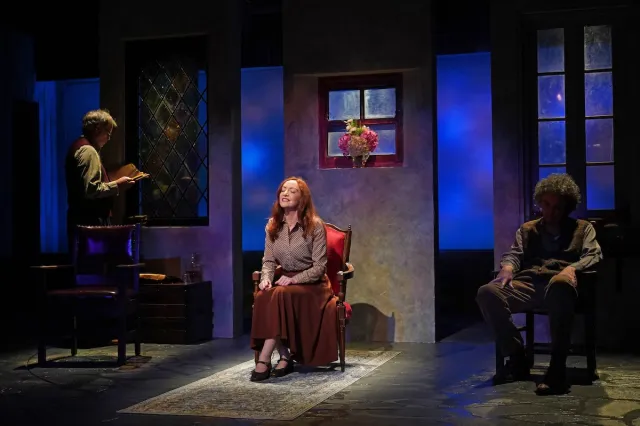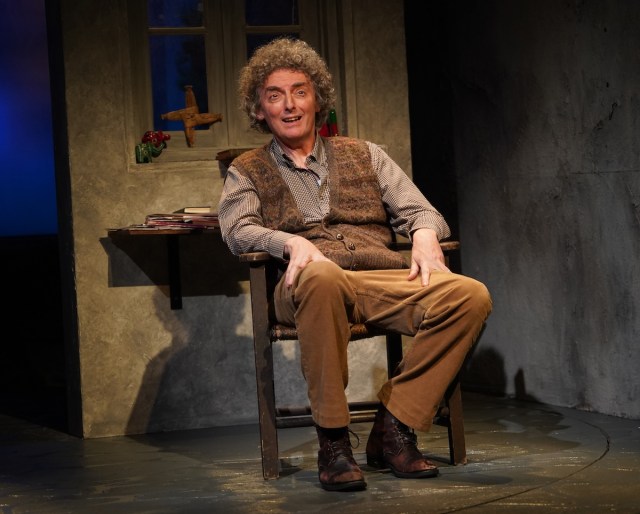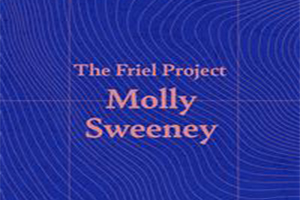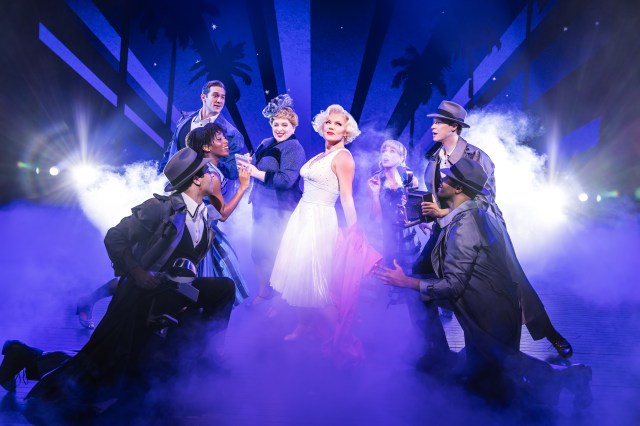Review: Molly Sweeney, or Dramatic Death by Monologue
Irish Rep stages its fourth and final play of the Friel Project.

(© Carol Rosegg)
There are interesting threads running through Molly Sweeney, the last of a series of four plays by author Brian Friel staged by Irish Repertory Theatre. With a story about disability, female bodily autonomy, and relationships between men and women, several things should resonate with today’s audience as they did in the ’90s when the play was originally staged, even if society’s views on these topics have changed. Unfortunately, those themes get muddled and fail to excite in this production.
Molly Sweeney (Sarah Street) is a young woman who has been blind since she was 10 months old. She tells us in a series of monologues that this apparent “loss” hasn’t really bothered her all that much. She is used to a world of only tactile sensations and scents, and in fact derives a lot of enjoyment from experiencing the world this way. Despite this, her new husband, Frank (John Keating), is determined to fix her vision, and enlists a famous physician, Mr. Rice (Rufus Collins), to help. Mr. Rice claims that because Molly had sight as an infant, he might be able to restore it. But she will have to “learn to see,” meaning, train her mind to recognize by sight the things she knows by touch.
The play takes place during an unspecified time, which makes this premise a bit murky. Is medicine advanced enough that this operation could possibly work, or is Mr. Rice, who has whiskey on his breath the first time he meets Molly, a charlatan? Or perhaps worse, an Icarus figure flying too close to the sun in performing this “miracle”? In today’s world where millions of people get cataract surgery each year, the scientific aspect sounds quite plausible. Production choices that pointed to a specific time period would have helped clarify the setup.

(© Carol Rosegg)
Unfortunately, this production also undercuts the drama, which is delivered entirely through monologues directed at the audience: We learn about Mr. Rice’s failed marriage, Frank’s wild schemes that he becomes obsessed with and then abandons, and Molly’s curiosity about the visual world. Instead of giving the characters action to hold the audience’s attention and deepen the meaning of the text, director Charlotte Moore has the characters largely confined to three chairs. With no interaction between the characters and little physicality for the actors to embody, the play drags and fails to deeply connect. It’s a directorial challenge to keep the audience engaged through two plus hours of monologues, and unfortunately the choices here exacerbate that challenge instead of facing it.
All of the actors do a fine job, particularly Street, who gives a dynamic and emotive performance. But, just as the actors seem confined to their chairs, it feels like they were not given free rein to dive fully into the characters. There are deep parallels between each of their stories, and though each actor has moments where they draw out some of those parallels, others get passed by. There’s a lot more subtly in the writing than is conveyed here, and rather than allowing the actors and the audience to discover it organically, the production marches right past it.
There’s so much dramatic potential in a story about disability and “regaining” what abled society tells those with disabilities they’ve lost. Today, with the possibility of using gene or stem cell therapy to “restore” sight, the bodily autonomy of people with disabilities is an even higher-stakes issue than when this play was written. In choosing monologues over interaction, the text of Molly Sweeney doesn’t mine the full potential of this drama, and this production lowers the stakes even more.









